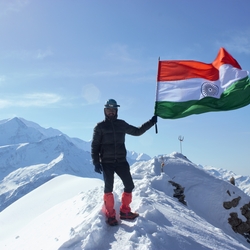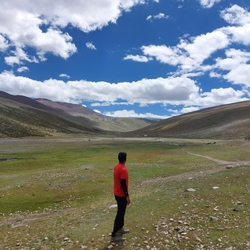Nothing but a good tent gives you a home in the wild. Depending on how one plans to spend their time outdoors, there are a range of tents custom made for the journey such as Dome tent, A-Frame tent, Geodesic and Semi geodesic tent, Inflatable tents, car camping mansions or rooftop tents.
For activities like trekking where we need to move between campsites or walking tour holidays, backpacking tents suit best.
In this article, we will be discussing the different parts of a backpacking tent, the purposes each part serves and how to pitch a backpacking tent.
Backpacking tents
For people who prefer to pack all their camping gear in a rucksack and set off on an adventure, a backpacking tent is likely to come in handy. These tents are lighter, smaller and easier to set up.
Since they need to be carried over long distances, backpacking tents are also designed to be compressed into a neat package that are compact for backpacks.
Parts of a backpacking tent
Let’s begin with the broad features that make up a tent before getting down to the nuances.
1) Tent body
This part includes the floor and the fabric top, also known as the outer tent.

2) Rain Fly
This is the waterproof cover that allows rain to run off the sides of the outer tent. It also resists winds thereby keeping the tent protected. The rain fly is generally made to fit the shape of the tent.

3) Tent Poles
The tent poles are what hold up the outer tent. They form the frame and give a stable structure to the tent.

4) Tent pole sleeves or clips
Tent pole sleeves or clips are used to attach the tent poles to the outer tent. These can be found on the tent body.

5) Guy lines
A guy line is a cord attached to the outer tent that is further anchored in the ground to add stability to the tent to withstand windy conditions.

6) Tent pegs
A tent peg is nail like structure that comes in different shapes and sizes that is pounded into the dirt to anchor both the outer tent and the guy line to the ground. Always carry extra tent pegs with you while trekking as they can break or bend quite often.

7) Tie out points
Tie out points can be found on the rain fly to attach the guy lines. These guy lines are then anchored to the ground using tent pegs. Doing this provides overall structure and stability to the tent.

8) Vents
Vents allow moisture to escape the tent, thus reducing the amount of condensation that builds up on the inside of the rainfly.

9) Bug netting
Bug netting as the name implies prevents insects from entering the sleeping area. Bug netting also helps in the ventilation.

These are the essential parts that make up a basic backpacking tent. There are further additions that can be made to a backpacking tent to make your stay more comfortable. Many campers prefer bringing tent accessories along with them to be prepared for unseen situations.
We list some of these accessories below:
Additional Backpacking tent Accessories
1) Gear Lofts
Gear Lofts are extra storage space that can be suspended from the roof of the tent.
2) Candle Lanterns
They can be suspended from the ceiling. Candle lanterns help to warm the tent as well as add lighting to the tent.
3) Ground sheets
Ground sheets prevent the tent from being punctured or abraded by sharp stones/pebbles on the campsite.
4) Repair kit
It is always advisable to carry a repair kit to fix anything from a hole in the floor of the tent to broken tent poles, especially on longer backpacking journeys.
Now that we are familiar with the basic features of a backpacking tent, we can move into learning how to pitch a tent.
Read Next: How to pitch a tent?






